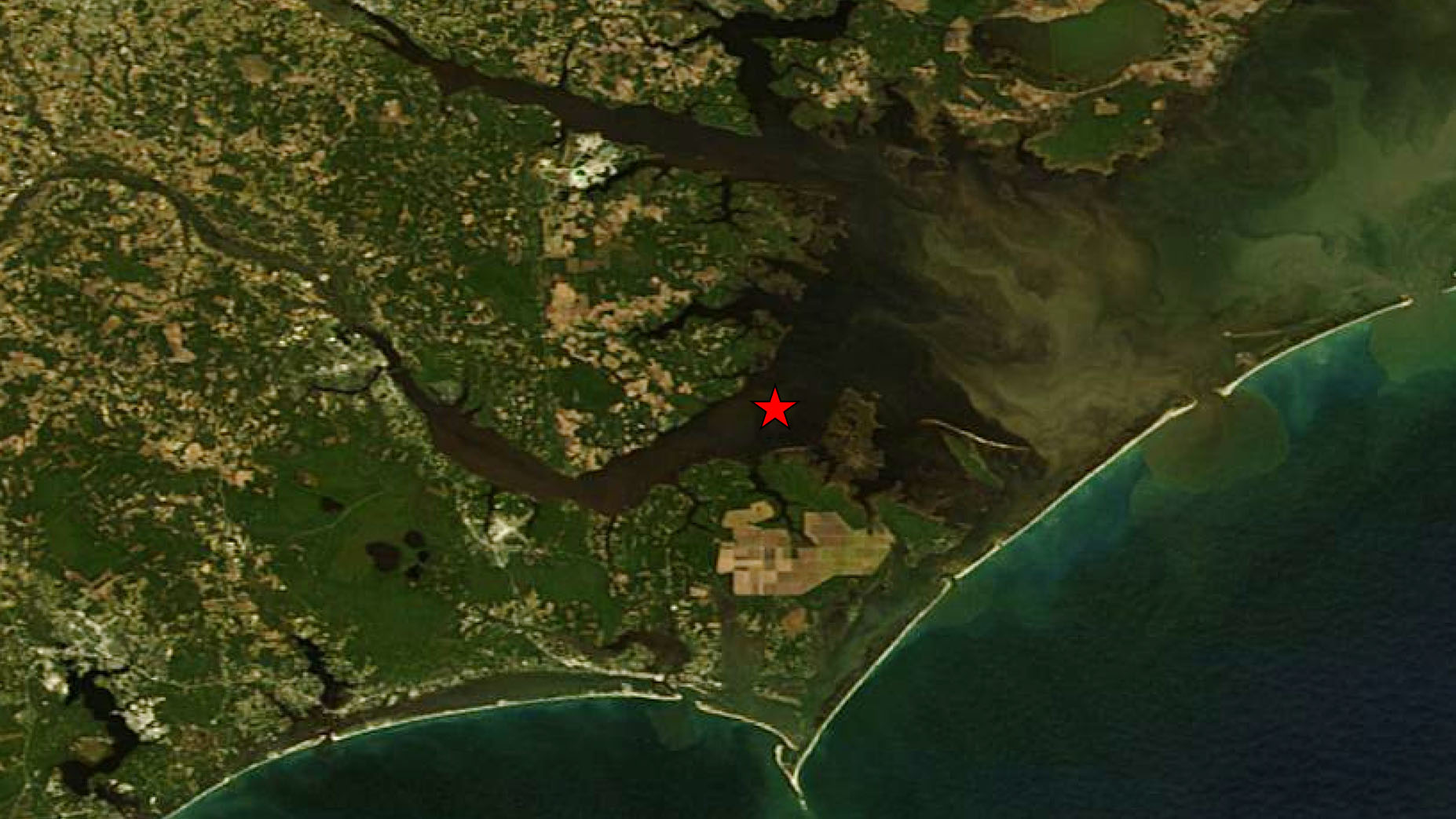How Frequent Hurricanes Change Estuarial Ecosystems

Everyone knows that hurricanes can have devastating immediate impacts where they make landfall. But what about their effects on ecosystems over time? New research from NC State and UNC-Chapel Hill looked at the effects of frequent hurricanes on estuaries – where rivers meet the sea – and found that increased hurricane frequency had lasting negative effects on these ecosystems including increased algal blooms, fish kills and dead zones.
The Abstract sat down with Chris Osburn, a professor of marine, earth and atmospheric sciences at NC State and co-investigator on the project, to talk about the findings.
THE ABSTRACT (TA): What led you to undertake this project? Were you noticing declining health in the estuaries mentioned in the paper?
OSBURN: Both the Neuse River Estuary and Pamlico Sound are nutrient sensitive ecosystems; the Neuse River Estuary has had a history of nutrient overenrichment (eutrophication), leading to periodic algal blooms, and chronic periods of low oxygen (hypoxia) that can threaten fish and shellfish populations. During a period of intense hurricane activity in North Carolina in the late 1990s, the resulting effects of floodwaters on our coastal waters became astonishingly apparent. My colleague Dr. Hans Paerl of UNC-Chapel Hill’s Institute of Marine Sciences (IMS) began learning the magnitude of these storms’ ability to increase nutrient and organic matter loading into estuaries. The increases in those materials promote excessive phytoplankton growth, leading to harmful algal blooms; the organic matter generated by these blooms “fuels” hypoxia and anoxia (no oxygen) events.
An important question linked to excessive production of organic matter is how extreme storm events that result in more nutrients and organic matter getting into the estuary affects its ability to act as a natural sink for carbon dioxide (CO2). Normally, some CO2 can be taken up from the atmosphere by algal growth. However, we found that in storm events estuaries instead can release rather large amounts of CO2 to the atmosphere through violent mixing and decomposition of the large amounts of organic matter discharged from storm-based runoff. It turned out, for example, that 2011’s Hurricane Irene “vented” enough CO2 back to the atmosphere to account for an entire year’s algal uptake of this greenhouse gas.
TA: What was your role in the research?
OSBURN: My group’s role was to quantify the increase in the amount and type of carbon flowing into the estuary. I started collaborating with Paerl’s group in 2010 and Hurricane Irene in 2011 was the first storm I studied. Biogeochemists such as myself are like accountants for the chemistry of an estuary. We measure the concentrations and the different forms of carbon that the estuary receives during baseline conditions (low flow) and after extreme events such as hurricanes (high flow). In other words, how much comes in but also how much goes out and in what form (organic carbon, CO2, etc.). The quality is important because some types of organic matter are better food for estuarine microbes than others. When microbes eat organic matter, they consume oxygen and release CO2.
TA: Given that these storms seem to be occurring more frequently, are there measures we can take to repair these environments after hurricanes so that the dead zones don’t form?
OSBURN: We are learning that land use in an estuary’s watershed is of critical importance to the amount of nutrients and organic matter that are discharged into our nutrient-sensitive estuaries. Nutrient management of the estuary needs to incorporate strategies to retain and process nutrients and organic matter on land, rather than allow them to be discharged downstream to estuarine and coastal waters. This is part of a comprehensive “source to sink” approach, which is needed as we encounter stormier, increasingly extreme climate conditions.
TA: Had anyone undertaken a study like this for these estuaries earlier?
OSBURN: Not really at this large scale; estuaries are often difficult to study without routine monitoring programs that observe the baseline conditions and provide context for extreme events such as hurricanes. The Neuse River Modeling and Monitoring (ModMon) program, which operates out of UNC-IMS, was implemented to do just that and has, over the past 20+ years, provided a nearly unparalleled observational program to understand how estuarine ecosystems function but also how resilient they are to extreme weather events such as what we experienced recently with Hurricane Matthew in 2016.
TA: Are there any follow-up studies planned?
OSBURN: We have proposed a follow-up research project to the National Science Foundation, which funded our one-year RAPID project for Hurricane Matthew. The key question to answer now is: After extreme events, how much carbon is processed within the Pamlico Sound vs. that exported to the coastal ocean, and what does that mean in terms of water quality in the estuary?
- Categories:


